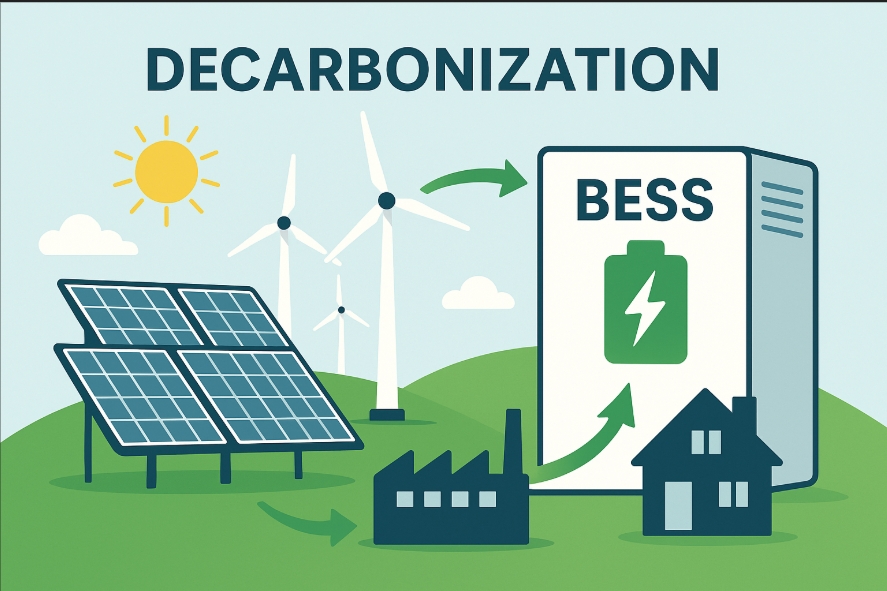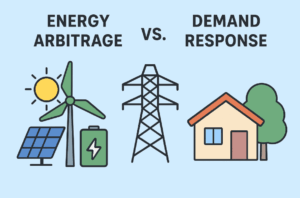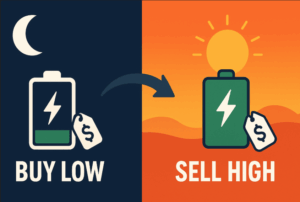- You have no items in your shopping cart
- Subtotal: $0.00

Decarbonization is no longer just a buzzword — it’s a global imperative. As climate change intensifies, the need to cut greenhouse gas emissions has never been clearer. One of the most effective strategies for reducing carbon emissions is the widespread adoption of cleaner energy technologies. Among these, Battery Energy Storage Systems (BESS) play a pivotal role by enabling greater integration of renewables, balancing the grid, and minimizing reliance on fossil fuels.
In this blog post, we’ll break down how decarbonization works, the role of BESS in supporting clean energy, and why it’s critical for industries, governments, and communities striving for a net-zero future.
What is Decarbonization?
Decarbonization refers to the process of reducing carbon dioxide (CO₂) and other greenhouse gas emissions across industries, energy systems, and daily human activities. It involves shifting away from carbon-intensive fossil fuels like coal, oil, and natural gas towards low- or zero-carbon energy sources.
Why is Decarbonization Important?
- Mitigates climate change: Reduces the impact of global warming and extreme weather events.
- Improves air quality: Cuts pollutants that harm human health.
- Boosts energy security: Reduces dependency on imported fossil fuels.
- Drives economic transformation: Creates green jobs and stimulates innovation in clean technologies.
Key Technologies Driving Decarbonization
To achieve deep decarbonization, multiple technologies must work together. Some of the key ones include:
✅ Renewable Energy (Solar, Wind, Hydro): Generates electricity with zero direct emissions.
✅ Smart Grids & Demand Response: Make energy systems more flexible and efficient.
✅ Electric Vehicles (EVs): Replace fossil-fueled transport with clean alternatives.
✅ Green Hydrogen: Provides a zero-emission solution for hard-to-electrify sectors.
✅ Carbon Capture & Storage (CCS): Captures emissions from industrial sources and stores them underground.
How BESS Supports Decarbonization
Battery Energy Storage Systems (BESS) are game-changers for decarbonization efforts. Here’s how they contribute:
1. Enabling More Renewables
Renewable energy sources like solar and wind are intermittent — they don’t always produce power when demand peaks. BESS stores excess electricity generated during sunny or windy periods and releases it when needed, ensuring a stable and reliable supply.
2. Reducing Fossil Fuel Dependence
Traditionally, fossil-fueled peaker plants cover spikes in demand. BESS can replace these by discharging stored clean energy instead, reducing carbon emissions associated with peak generation.
3. Improving Grid Stability
BESS provides services like frequency regulation, voltage support, and backup power. This flexibility helps grids accommodate more renewable energy while maintaining reliability.
4. Supporting Microgrids and Off-Grid Solutions
In remote or island communities, BESS paired with renewables reduces reliance on diesel generators, cutting both costs and emissions.
Real-World Example: BESS in Action
One well-known example is the Hornsdale Power Reserve in South Australia — once the world’s largest lithium-ion battery installation. It has:
- Reduced reliance on gas peaker plants.
- Improved grid frequency stability.
- Saved millions in grid stabilization costs.
- Prevented tons of CO₂ emissions by supporting more renewable integration.
Benefits of Combining BESS with Clean Energy
✔️ Higher Renewable Penetration: Maximizes the use of clean energy.
✔️ Lower Carbon Intensity: Cuts emissions from backup fossil fuel generators.
✔️ Economic Savings: Reduces operating costs and price volatility.
✔️ Resilience: Provides backup during outages and emergencies.
Challenges and What’s Next
While BESS and other clean energy technologies are critical, challenges remain:
- Upfront Costs: Battery storage still requires significant investment.
- Material Sourcing: Sustainable sourcing of battery materials is crucial.
- Policy and Regulation: Clear frameworks and incentives drive adoption.
The good news? As technology advances and economies of scale kick in, costs are falling rapidly, making decarbonization with BESS more accessible than ever.
How Businesses and Communities Can Act
👉 Assess Your Energy Use: Identify where emissions come from.
👉 Invest in Renewables and BESS: Combine generation and storage.
👉 Work with Partners: Engage suppliers and customers on carbon reduction goals.
👉 Monitor and Report: Use data to track progress and find improvements.
Final Thoughts
Decarbonization is not optional — it’s essential for a sustainable future. By integrating technologies like BESS with renewable energy, we can drastically cut carbon emissions, create a more resilient grid, and pave the way for a cleaner, greener world.
Are you ready to be part of the solution? The time to act is now.
FAQs About Decarbonization and BESS
Q1: What industries benefit most from BESS for decarbonization?
A: Energy-intensive industries like manufacturing, utilities, and data centers benefit greatly by balancing load, lowering emissions, and improving energy efficiency.
Q2: Is BESS only for large-scale projects?
A: No! BESS solutions now range from residential systems to massive grid-scale installations.
Q3: How long can BESS store energy?
A: It depends on system size and battery type. Some store energy for a few hours, while long-duration storage technologies can cover days.
Q4: What are the environmental impacts of BESS?
A: Responsible sourcing, recycling, and second-life applications for batteries help minimize environmental impact.
Q5: How does BESS help with net-zero goals?
A: By enabling greater renewable use, displacing fossil fuels, and supporting resilient, low-carbon grids, BESS accelerates the journey to net zero.




[…] If you’re looking for a safe, long-lasting, and sustainable battery solution, LFP should definitely be on your radar. From off-grid cabins to cutting-edge EVs and commercial energy storage, LFP technology is helping people all over the world switch to smarter, greener power — with peace … […]
[…] are devices that convert hydrogen gas into electricity through a chemical reaction with oxygen. This process produces electricity, water, and heat—and no harmful emissions. They are considered a clean and efficient alternative to fossil fuels, especially in sectors like […]
[…] Solar energy is a green alternative to fossil fuels. It doesn’t release carbon dioxide or other ha… […]
[…] EVs, grid-level BESS, mobile devices, home storage (like Tesla […]
[…] BESS (Battery Energy Storage System) […]
[…] of ESS: As Energy Storage Systems (ESS) become increasingly widespread in homes, businesses, and utility-scale projects, so do the safety concerns. While these systems are […]